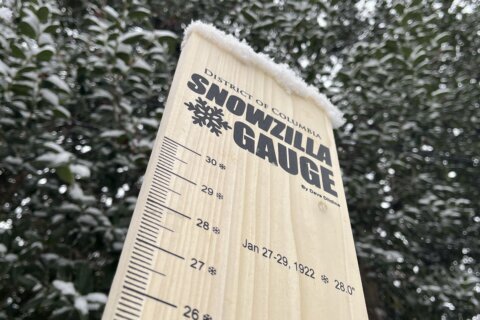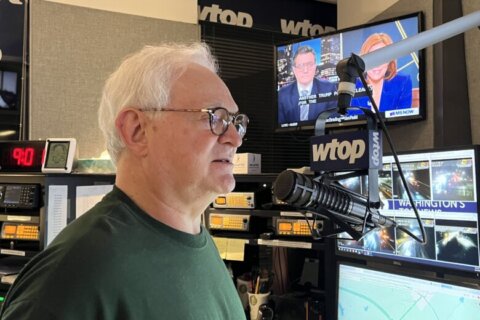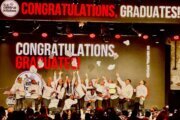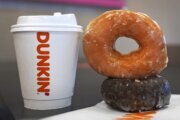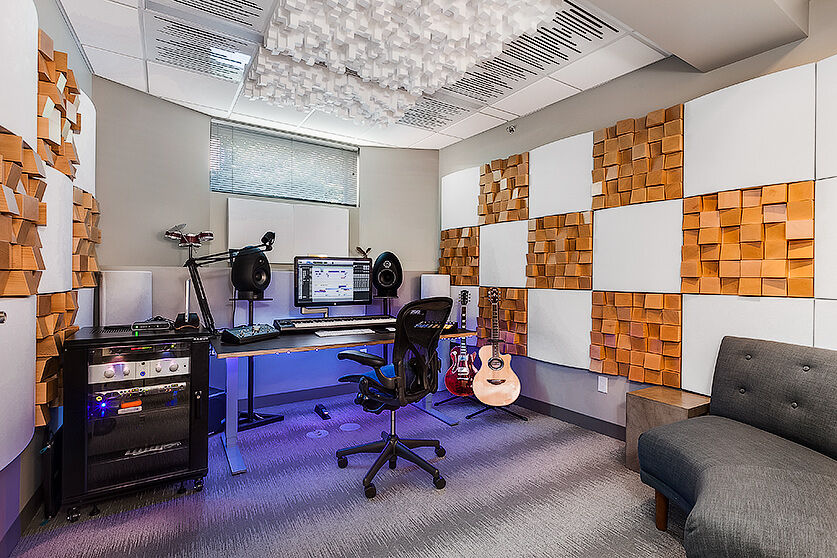
We’re delivering the news like always at WTOP, but you’ve probably noticed that some of what goes between our news stories has changed: WTOP last month started using new music to introduce its various segments.
We’re a news station, as distinct from a “music station,” but the reality is there’s quite a bit of music on WTOP: There’s music at the top of the hour (whatever:00), the bottom of the hour (whatever:30), before the traffic and weather on the 8’s, the sports and the money news. It adds up to about four minutes an hour, and that’s not counting any this-just-in moments or the commercials (or for that matter, stories by Neal Augenstein, who’s always looking for a way to jam a song snippet into his features).
But unlike a music station that plays the hits of today today and the hits of tomorrow tomorrow, at WTOP we like to stick with our music for a long time. General Manager Joel Oxley said the station hadn’t changed its music at all in about 10 years, and some of the music “beds” had been around since 1994. That sort of solid reliability is important, but after a certain point familiarity turns into stagnation. And that’s when WTOP got together with Reel World, based in Seattle, to give the station a new sonic signature.
“We knew we wanted it to be a little bit more modern, a little bit more contemporary,” said Julia Ziegler, WTOP’s director of news and programming. “And for me, I also wanted the music beds to match the pace of our news, which over the years has been faster.”
Erik Huber, the co-founder and music director at Reel World, said they’ve done music for stations across the U.S. and in Europe, but when WTOP came calling, the first thing they did was listen.
They spent time “doing a deep dive into the sound of the station, listening to the output, listening to the flavor, the personality, the pacing, the delivery, the sound of the different presenters.”
In the news, trust is everything. And there’s “an expectation on the part of an audience that a news station [will convey] authority and trustworthiness,” Huber said.
From there, though, the questions begin: “How does that sound in music?,” Huber said. “What instruments do we use? What’s the tempo? What’s the melodic cadence of the sonic logo? Those are all questions that have to be answered along the way.”
That’s when they started to go to work. “Those two words begin to suggest sort of a sonic palette, if you will,” Huber said. “I’m talking about strings and horns and sort of a big orchestral sort of palette, right? That conveys that sense of, ‘Hey, this is traditional; it’s been around for a long time; it’s not going anywhere. It’s here to stay.
And yet, you know, we also want it to sound like 2020. We want it to sound now and current and up to the minute. So how do we sort of balance those two?”
The key, he said, was to combine orchestral sounds such as strings, horns and percussion (both live and sampled) “with just a hint of loops or synthesizers or more current-day types of textures. And to do it in a way where it’s gonna blend and sound cohesive and sound part of one whole.”
Reel World’s Craig Wallace said there was yet another factor: the ability to make changes and grow.
“We want to make sure that we are listening not only to what you guys at the station want … but looking at the landscape of, you know, what’s happening in media … what do people expect when they turn on radio, TV or any platform in 2020 and beyond,” he said. “It was important for us that we were creating something that kind of reflected the current media landscape and would really let the station evolve.”
That’s a lot to think about before any music is laid down. “As much as I’d love to say that there’s a magic bullet for stuff like this, you know, more often than not, it’s sort of a trial-and-error type of approach where we’re just trying stuff and seeing what resonates,” Huber said.
Trial and error is, of course, a euphemism for error, but according to Ziegler they got it right pretty quickly.
“It actually it went a lot faster than I thought it would,” she said. “Based on that direction that we gave them, they came back to us with some various [music] beds. And we listened through them and said, ‘you know, more of this, less of that’ or ‘less of this, more of that.’ And they nailed it. I could not be more excited.”
‘Sonic logo’
One of the key factors in a station’s musical identity is what’s called a sonic logo – what Huber calls “the monogram that gets stitched on the corner of the T-shirt.”
Some repeat customers, most notably KISS 102.7 in Los Angeles, have a Reel World-designed signature instrumental motif that they’ve stuck with for years, even if they dress it up with different instrumentation from time to time. Since WTOP didn’t have that, they were starting from scratch.
You’ve probably noticed that many of the new music beds contain a six-note motif to which you could sing “WTOP.”
That’s no accident.
“That is exactly what it is meant to sound like,” Ziegler said. She compared it with the iconic five-note “I’m lovin’ it” theme that’s been a McDonald’s staple for years.
“Yeah,” Huber said; “that was sort of a conscious thought process early on, as far as having the musical note selection and the pacing and the rhythm reflect ‘WTOP’ from a syllable perspective.”
There was the usual back and forth of the creative process, but in the end the brass at WTOP were happy.
“News evolves,” Ziegler said; “how we deliver the news evolves; people have evolved. And we wanted our station imaging and music to evolve too. I don’t think a news station necessarily needs to sound like a TV station or a radio station in 1952 to deliver the news. When I listen to these new music beds, I really say to myself ‘That’s what news should sound like in 2020.’”


